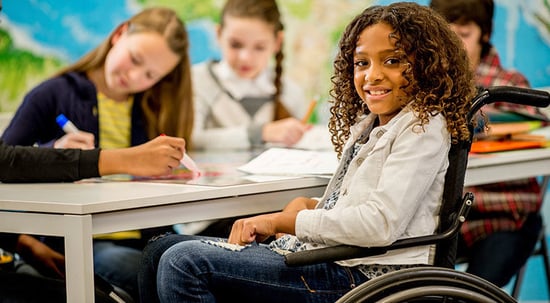Diaphragmatic Pacing in Children
Join Our Movement
What started as an idea has become a national movement. With your support, we can influence policy and inspire lasting change.
Become an Advocate
The benefits are that your child is able to live, can have a satisfying life, and thrives. Children who use mechanical ventilation do grow up to be successful adults.
As mentioned previously, research is generally conducted with adults and then moved to the pediatric realm. Success in providing ventilation is the development of diaphragmatic pacing. This technique has been around for a number of years but more recently has met mainstream. Advances in the technology of the device, the ability to implant the device using laparoscopic technique (minimally invasive) surgery and FDA approval have made this intervention available to most adults and children. This is one area where it appears that dramatic success in pediatric cases has enhanced the use in children faster than adults. It could be because a child's developing body is more adaptable or because people are more willing to move ahead with the process. Diaphragmatic pacing is now more often offered as the first option.
Two types of diaphragmatic pacers are commonly used. The Conventional type has an internal electrode attached to the phrenic nerve at the neck, chest, or diaphragm. A receiver is placed under the skin. A radiofrequency signaling transmitter is placed on the outside of the skin for control. The other type is called a Diaphragmatic Pacing System (DPS). In this system, four electrodes are placed on the diaphragm, with a fifth electrode implanted under the skin as a grounder. The five electrodes are grouped together in a socket exiting the skin as an external pulse generator that connects to an external, removable cable.
Some of the advantages of diaphragmatic pacing children include immediate implant without some of the testing for those eligible, resulting in less delay, use of the device as a bridge to rest an injured body until the return of function, a closed system preventing infection and internal lung damage, fewer options for equipment failure or disconnections, the ability to move more freely and less often use of a tracheostomy. Speech has a regular flow. Eating by mouth is possible with taste maintained. Depending on the individual case, the stimulation by the diaphragmatic pacer can ‘train’ the phrenic nerve to begin to work again as the nervous system attempts to heal itself. Some research studies suggest lifespan with the diaphragmatic pacer is significantly enhanced perhaps because it mimics typical ventilatory function, is implanted, so there is no artificial opening in the body once the implantation surgery has healed and/or because it triggers the natural movement and function of the diaphragm.
This is not to say that diaphragmatic pacing does not have its own downsides. The complications are rarer but can happen. Equipment can fail, the implant can become dislodged, wires can break internally. Surgical complications, as with any surgery, can occur, including infection, nerve damage, bleeding, or poor healing.
Many payors are seeing the advantage of using diaphragmatic pacing. Not only fewer complications but also in more comfort and freedom. Since this is a commercially available device, approved by the FDA, you can obtain the device anywhere. You do want a surgeon experienced in the implantation of children. Many trauma surgeons and pulmonary surgeons are implanting the device immediately to reduce and avoid the complications of mechanical ventilation. These same trauma surgeons and pulmonary surgeons are able to implant the device in non-emergent situations as well. You may be able to get the device in your hometown or close by. No longer would you need to travel or go out of state (as in the case of Medicaid payments).
Your child may already be using mechanical ventilation. Consideration of switching to diaphragmatic pacing is an option. Diaphragmatic pacing may be the only ventilatory method used, or you may opt for some alternatives. Some children and parents opt for a diaphragmatic pacer in the day with non-invasive mechanical ventilation at night. There are all sorts of combinations of the product that can benefit your child. The more you learn about diaphragmatic pacers, the more you will be able to make an informed decision for your child.
